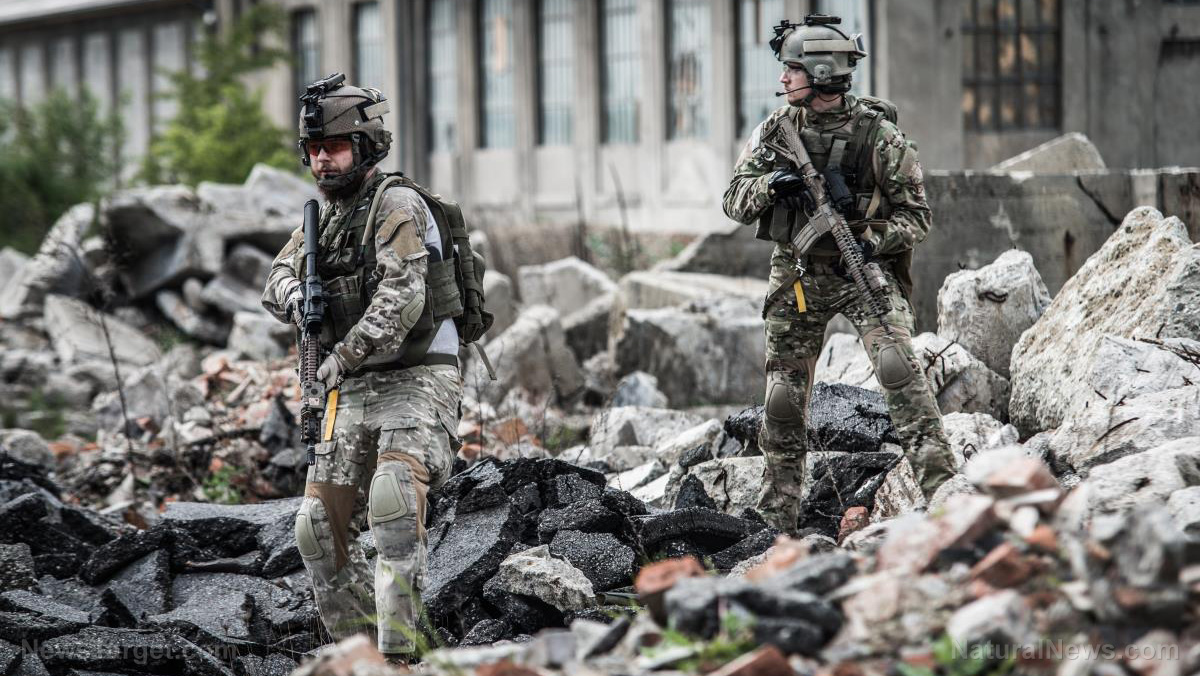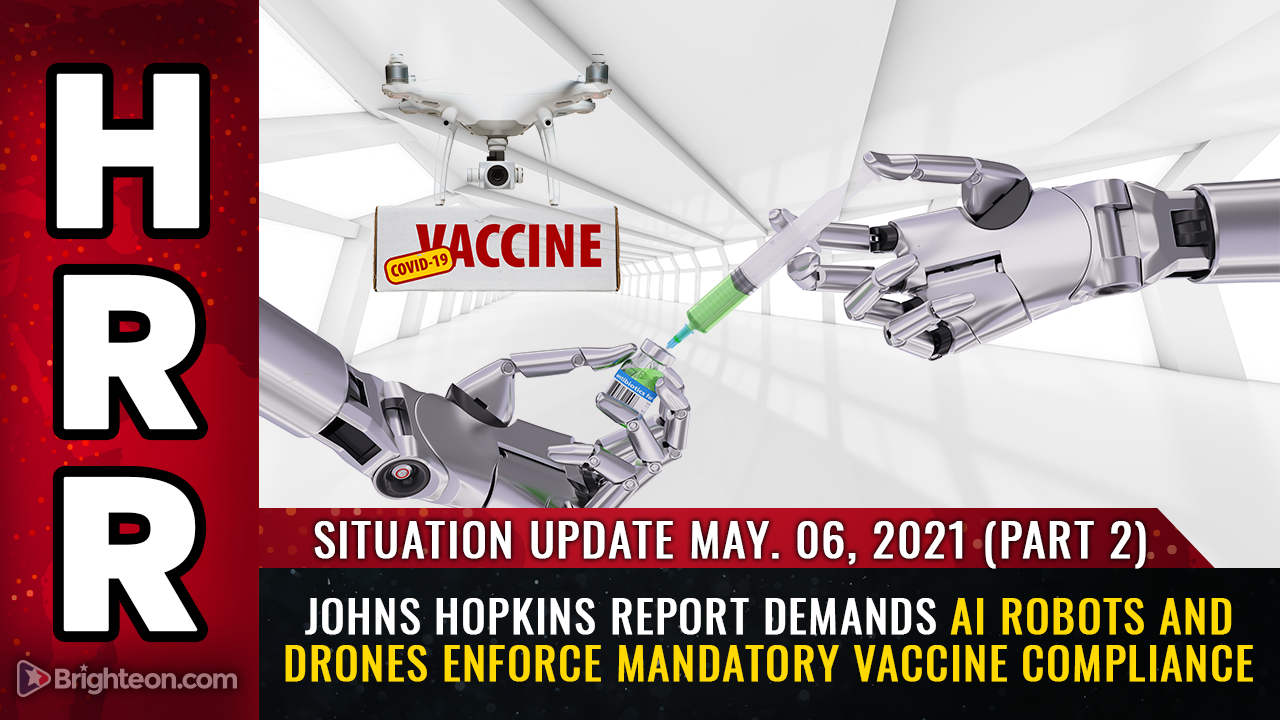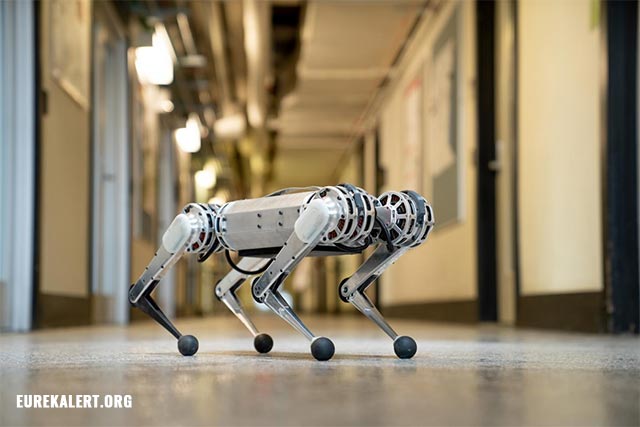Engineers develop an “octocopter” carpenter drone capable of attaching shingles to a roof using an equipped nail gun
01/05/2021 / By Virgilio Marin

Engineers from the University of Michigan (UMich) have developed a robot carpenter that can autonomously attach roof shingles using an onboard nail gun. The roofing device is an octocopter drone prefigured to make its own calculations on the force required to bury a nail. A human operator just needs to turn a virtual switch to start the roofing.
“For me, the biggest excitement of this work is in recognizing that autonomous, useful, physical interaction and construction tasks are possible with drones,” Ella Atkins, a professor of aerospace engineering and robotics at UMich and a researcher on the project.
Making the robot carpenter
According to Atkins, the roofing octocopter was made out of the desire to shift human labor from “dull, dirty and dangerous” jobs to “cleaner, safer and more interesting jobs.” Drones were tapped mainly for surveillance jobs, and the researchers wanted to use them for more physical tasks.
The researchers used a system of markers and stationary cameras that enabled the drone to precisely locate itself in space and determine where to place the nails. To fire the gun, the team measured the force required to compress the point of the nail gun into the material and developed software that allow the octocopter to apply the necessary force.
The drone is also equipped with a human-operated virtual switch that activates the gun and contains a special camera that transmits what the drone “sees” back to a computer. The researchers tried to reduce the drone’s nailing speeds but failed to come up with an optimal approach.
“[The] nail gun tip often bounced off the roof, which meant it either wouldn’t trigger or it would trigger in the wrong place,” said Matthew Romano, a doctoral student of robotics at UMich and the lead researchers of the project.
However, Atkins said that the drone is already working as fast as she and her spouse did on their first attempt to re-roof their house. A first-time roofer, according to Atkins, naturally starts out slow.
“That learning process, the evolution from them being a complete novice to being successful, is something that we’ll need to see in this system as well,” she explained. (Related: First wireless insect-size robot takes flight.)
The device will also require many other improvements for a practical system. For one, the octocopter has to be powered through a “tethered” power supply rather than by a battery. Batteries and nail guns are heavy, which means the system can only run for around ten minutes at a time. But by using a tether, or power cable, attached to an on-ground power supply, the device will be able to run indefinitely, according to the researchers.
In addition, the camera and marking system still has to be improved. Atkins said that it is optimal to have a camera system mounted on the octocopter that allows it to understand both the orientation of the shingle and its position.
Robot takeover threatens American labor
Robots like the octocopter carpenter have been rising as of late, fueling worries that they may soon take over jobs previously held by humans. In a 2013 paper, researchers from Oxford University estimated that around 47 percent of the total U.S. employment is at risk for automation at some point in the immediate future.
Most automated systems today are commonly found in plants, warehouses and factories that cater to an E-commerce supply chain. Amazon, Apple and IKEA are just some of the big corporations that have already altered their warehouses with a battery-powered workforce.
In a 2017 report by the Pew Research Center, a non-partisan think tank based in Washington D.C., 70 percent of Americans are very or somewhat worried about a future where robots and computers are capable of performing human jobs.
“They are not incredibly excited about machines taking over those responsibilities,” said report author Aaron Smith.
Read more stories about robot takeover at Robots.news.
Sources include:
Tagged Under: American labor, automation, computers, computing, future science, future tech, innovation, octocopter, research, robot economy, robot jobs, robot takeover, robots
RECENT NEWS & ARTICLES
COPYRIGHT © 2017 DRONEWATCHNEWS.COM
All content posted on this site is protected under Free Speech. DroneWatchNews.com is not responsible for content written by contributing authors. The information on this site is provided for educational and entertainment purposes only. It is not intended as a substitute for professional advice of any kind. DroneWatchNews.com assumes no responsibility for the use or misuse of this material. All trademarks, registered trademarks and service marks mentioned on this site are the property of their respective owners.





















